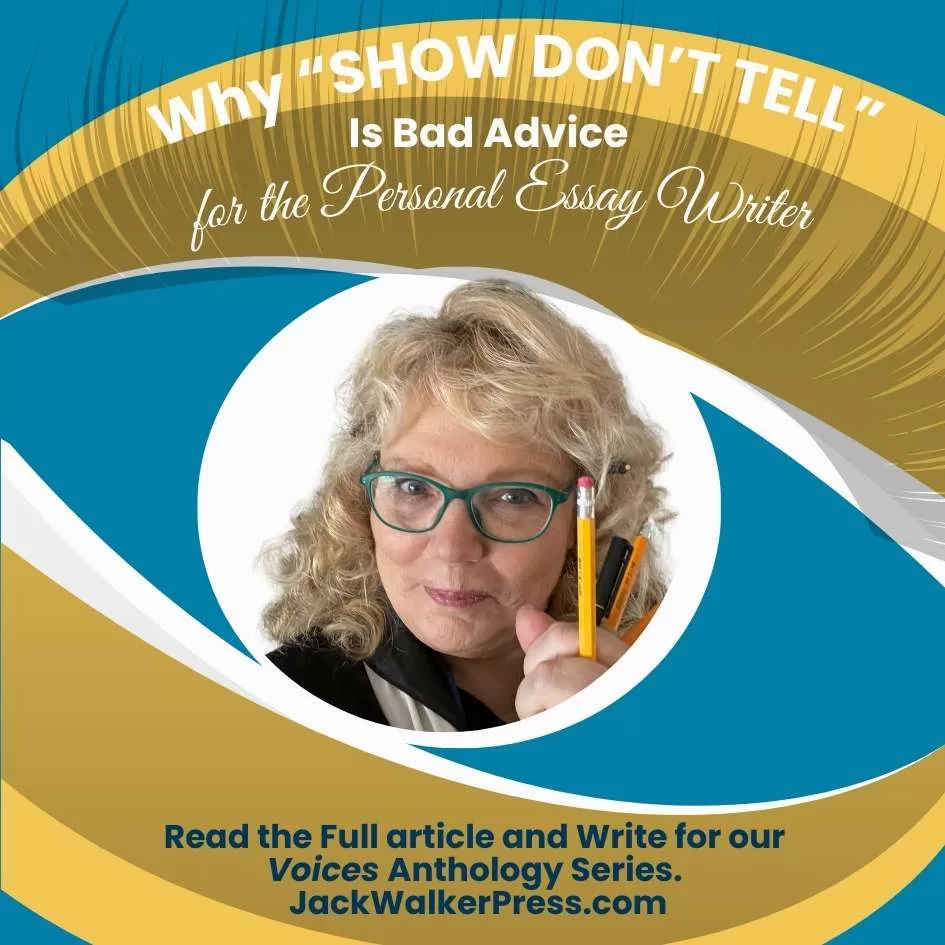
Find the Magic of Show and Tell in the Personal Essay
Writers have been told to "show, don't tell." This advice, while useful in many contexts, can be limiting and even detrimental when applied to personal essays. Instead, a more nuanced approach of "show and tell" is far more effective. By blending vivid, sensory scenes with engaging narration, personal essay writers can create deeper connections and more resonant experiences for their readers.
Writers who embrace show and tell in personal essay writing are invited to connect and submit to our personal essay collections. See our current calls for submissions.
The Problem with "Show, Don't Tell"
The mantra "show, don't tell" suggests that writers should rely solely on description and action to convey their stories, avoiding explicit explanations or direct statements. Sensory scenes create evocative experiences for the reader.
Still, personal essayist can do better. Immersive writing. when employed without a reflecting narrator, can also strip the narrative of the writer's unique voice and insights, which are crucial in personal essays. Essays are a cognitive journey.
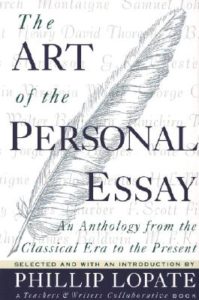 Phillip Lopate, in his anthology The Art of the Personal Essay, argues for the importance of the essayist's voice and presence in their work. He states, "The essayist examines his or her life, not to reduce it to a recitation of events...but to reveal its continuing meaning." This means that telling—explicitly sharing thoughts, reflections, and insights—is a vital part of the personal essay.
Phillip Lopate, in his anthology The Art of the Personal Essay, argues for the importance of the essayist's voice and presence in their work. He states, "The essayist examines his or her life, not to reduce it to a recitation of events...but to reveal its continuing meaning." This means that telling—explicitly sharing thoughts, reflections, and insights—is a vital part of the personal essay.
Lopate’s essays establish the narrator as an essential character withing the essay. He showcases his own societal discomfort and ineptness with humor and is counterintuitively an authoritative analyst of universal human experiences. Lopate’s essays evoke laughter 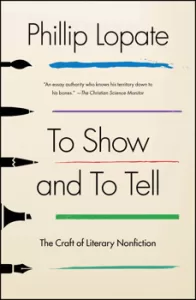 and insight- especially in a favorite collection: Against Joie de Vivre: Personal Essays
and insight- especially in a favorite collection: Against Joie de Vivre: Personal Essays
Lee Gutkind, often dubbed the "Godfather behind creative nonfiction, tends to favor scenes but is not at odds with Lopate.. In his book You Can't Make This Stuff Up, he writes, "What the essayist must do is tell the truth as he or she understands it... showing is not enough." Gutkind emphasizes that personal essays require the writer to be present, to offer their perspective, and to guide the reader through their thoughts and feelings. He wants you to hypnotize the reader. The complexity of honesty (not being right) underpins the effective personal essay.
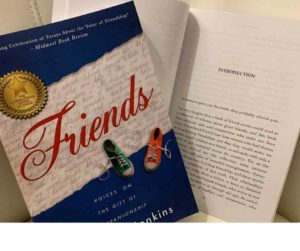
"And showing up turns out to be almost everything. May not be the only thing, but it’s a big thing. I reconnected with Jeff and Larry and the group picked up some worthy stragglers like Steve, but the core remained, self-selected by showing up. There’s been some stints in rehab, some surgeries, some arrests for heroin, one death by overdose, another after a short and one-sided battle with pancreatic cancer, and one was banished for betraying the trust. But Henry’s limitless capacity for fun remains contagious, and Jimmy continues to mock time by playing on two different softball teams at the Great Meadows, in Central Park—hair, no longer being an issue.
And when Arye, my younger son, decided to leave college to work on his first startup, Henry took him aside. He skipped the conventional business advice and focused on Arye finding people he trusted. Henry showed up for Arye, because that is what we do." ( Page 187 paperback)
Elan's Barnahama "Showing Up" appears in Friends: Voices On The Gift Of Companionship
Notice there are no scenes in this writing, yet the narrative is effective in bringing meaning to experience.
The Power of "Show and Tell" in Personal Essay Writing
Rather than strictly adhering to "show, don't tell," personal essay writers should embrace a balanced approach: "show and tell." This method involves creating vivid scenes that immerse the reader in the experience while also providing reflective commentary that offers insight and meaning.
The commentary comes from a character that is the author, but is a curated version of the narrators real persona. In Bob Shacochis’ essay collection "Domesticity," the narrator presents himself with a touch of curmudgeonly charm, often poking fun at his own foibles and idiosyncrasies. Through Shacochis's self-awareness and wit, the narrator comes to life on the page as a complex and relatable figure, unafraid to reveal his vulnerabilities and shortcomings.
In one essay, the narrator humorously reflects on the challenges of modern life. "In the age of the Internet, we are all Swiss Family Robinsons, marooned in the vast wasteland of our personal bandwidths, and it's not a happy island." Shacochis creates a flawed and fun character. He resonates with authenticity and humanity. Domesticity essays also include a recipe, validating this fun and varied genre.
Showing Through Sensory Detail
Details help to paint a vivid picture of the writer's experiences. They allow the reader to see, hear, smell, taste, and touch the world the writer is describing.
While not quite a full scene this sensory writing from E.B. White demonstrates “show,” allowing the reader to smell, hear, and feel the experiences alongside the writer.
"I kept remembering everything, lying in bed the first morning, smelling the bedroom, and hearing the boy sneak quietly out and go off along the shore in a boat. The first morning after arriving at the lake, we all felt the same damp moss covering the stones of the shore; we caught the same smelts in the same pockets under the rocks; we all felt the same tug at our lines, and heard the same snap when we dipped a fish off the hook and tossed it into the pitch-darkness of a pail."
White, E. B. "Once More to the Lake." Harper's Magazine, August 1941.
Another Example: In "Heaven and Earth in Jest," from Teaching a Stone to Talk, Annie Dillard immerses readers in the natural world with rich, sensory descriptions: "They dug holes for the thin puppies...until the puppies had trotted in a starving circle so deep that they were looking automatically into Heaven each time they raised their eyes."
Telling Through Reflection and Insight
While sensory details engage the reader, it’s the writer’s reflections and insights that provide depth and meaning. Personal essays thrive on the writer’s ability to reflect on their experiences and draw connections that resonate with universal themes.
Example: In "Once More to the Lake," E.B. White doesn't just describe the lake and his experiences there; he reflects on the passage of time and the cycle of life, drawing the reader into a deeper contemplation of these themes.
Integrating Show and Tell
Combining showing and telling allows writers to create a more layered and engaging narrative. The sensory details draw the reader in, while the reflections and insights connect the personal experience to broader themes and truths.
Example: In his essay "My Bird Problem," Jonathan Franzen uses vivid descriptions of his encounters with birds to draw readers into his world, but it's his reflective commentary on his obsessive nature and environmental concerns that give the essay its depth and resonance.
*****
Practical Tips for Blending Show and Tell in Personal Essays
- Start with a Scene: Begin with a vivid, sensory-rich scene to draw readers in.
- Pause for Reflection: After immersing the reader in the scene, take a moment to reflect on its significance.
- Weave Together: Throughout the essay, alternate between showing and telling to maintain a dynamic and engaging narrative.
- Be Honest and Personal: Don’t shy away from sharing your thoughts, conflicted feelings, and insights. Your voice is what makes the essay unique.
Embrace the Show and Tell in Personal Essay Writing
The advice to "show, don't tell" can be limiting for personal essay writers. By embracing a balanced approach of "show and tell," writers can create richer, more conflicted essays that connect deeply with readers. Philip Lopate and Lee Gutkind emphasize that the power of personal essays lies in the writer's ability to blend vivid description with reflective insight. These essays not only reveal meaning but offer the reader the experience of wandering through ideas with you. They experience the insight along side you imbued with thier own experience because you are both connected to the universal theme. So, go ahead—show your readers the world as you see it, and tell them why it matters.
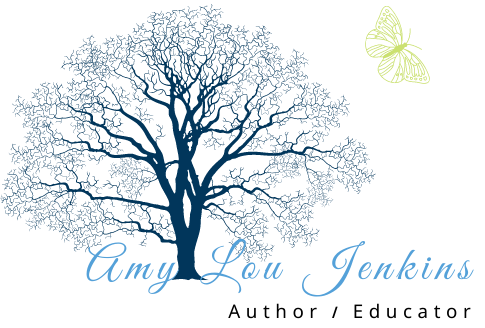





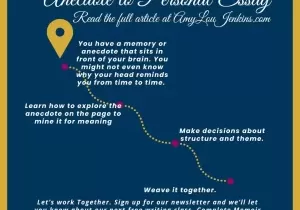


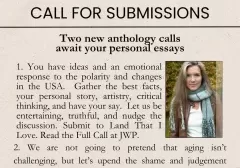




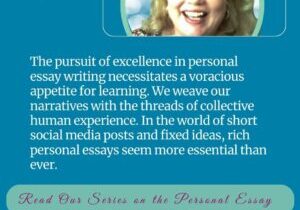
1 thought on “Show and Tell In Personal Essay Writing”